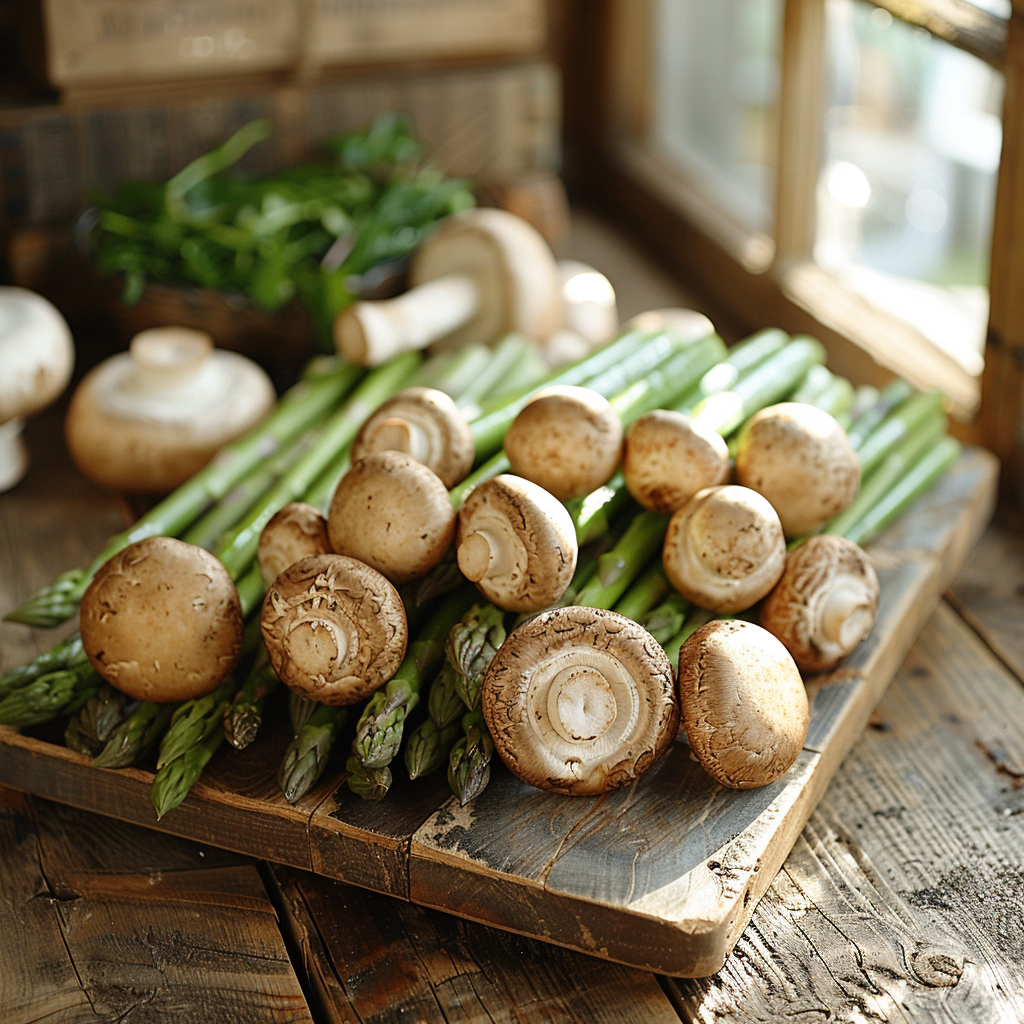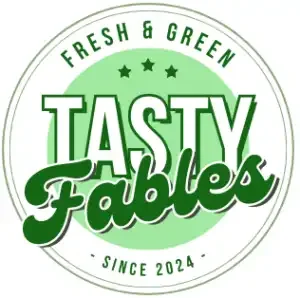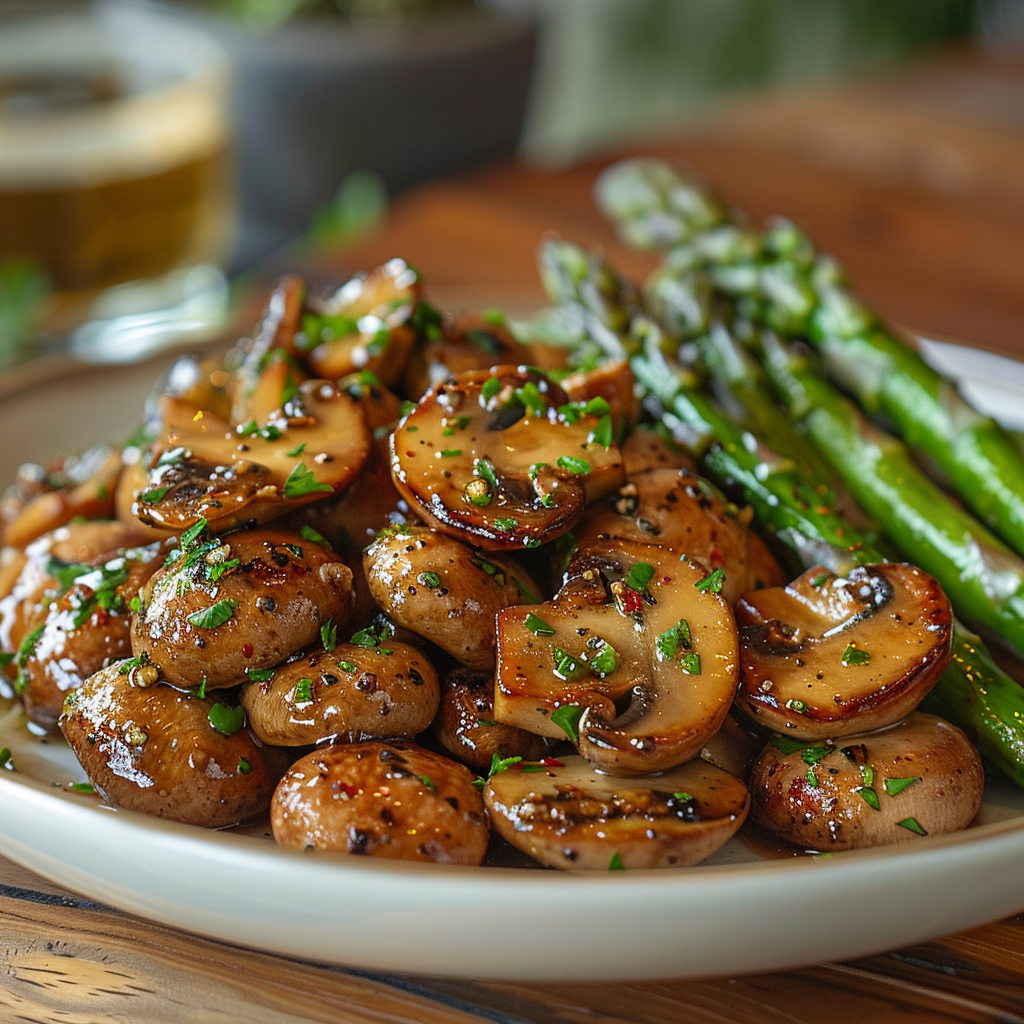Introduction Asparagus Mushroom
Asparagus and mushrooms are not only culinary staples but also nutritional powerhouses with impressive health benefits. These versatile ingredients shine in both simple and gourmet dishes, making them a favorite in many kitchens worldwide. In this article, we’ll explore their unique attributes, health benefits, culinary applications, and much more. Whether you’re a seasoned chef or a home cook, you’ll find plenty of inspiration to make the most of these delicious vegetables.
Part 1: Introduction to Asparagus and Mushrooms
Exploring the Culinary and Health Benefits of Asparagus and Mushrooms
Asparagus and mushrooms have long been cherished in global cuisines, praised for their flavors and incredible nutritional content. They elevate meals with their unique textures and tastes, while offering a wealth of vitamins, minerals, and antioxidants.
Overview of Asparagus
Asparagus, a perennial vegetable, has been a culinary favorite for centuries. Known for its spear-like shoots, it’s both tender and flavorful when cooked properly. It belongs to the lily family and is widely celebrated for its versatility in cooking.
Nutritional Profile of Asparagus
This vibrant green veggie is rich in essential nutrients like folate, vitamin K, and vitamin A. It’s also packed with fiber, which aids digestion. Furthermore, asparagus contains antioxidants, such as glutathione, which help protect cells from damage caused by free radicals.
Varieties of Asparagus
Although the green variety is the most common, asparagus also comes in white and purple types. White asparagus, grown underground, has a milder flavor, while purple asparagus has a sweeter taste and is often eaten raw in salads.
Overview of Mushrooms
Mushrooms, the edible fungi, add a savory depth to dishes with their earthy flavors and meaty texture. They are a staple in many cuisines, from Asian stir-fries to European stews, and are loved for their ability to complement a variety of flavors.
Nutritional Profile of Mushrooms
Mushrooms are a low-calorie food packed with vitamins like B2, B3, and D. They also contain selenium, an essential mineral for immune support, and antioxidants that promote overall health. Some varieties, like shiitake, are even believed to have immune-boosting properties.
Common Edible Mushroom Varieties
Popular types include button mushrooms, portobello, and shiitake. Each offers unique tastes and textures. For instance, button mushrooms are mild, while portobellos are robust and meaty, making them ideal for grilling.
Part 2: Health Benefits of Asparagus and Mushrooms
Health Benefits of Asparagus
Asparagus isn’t just a delicious addition to meals—it’s also a nutritional powerhouse. Let’s explore how it supports overall health.
Rich in Vitamins and Minerals
Asparagus is teeming with vital nutrients like vitamin C, vitamin E, and potassium. These nutrients contribute to immune function, skin health, and heart wellness. Its folate content is especially significant for pregnant women, as it aids fetal development.
Antioxidant Properties: Asparagus Mushroom
Antioxidants in asparagus, such as glutathione, work tirelessly to neutralize harmful free radicals in the body. This protective action can reduce the risk of chronic diseases, including heart disease and certain cancers.
Digestive Health Support:Asparagus Mushroom
Loaded with dietary fiber, asparagus promotes healthy digestion and prevents constipation. It also contains inulin, a prebiotic fiber that nourishes beneficial gut bacteria, supporting a robust digestive system.
Health Benefits of Mushrooms
Like asparagus, mushrooms offer an impressive array of health advantages, thanks to their rich nutritional profile.
Immune System Enhancement
Certain mushrooms, such as shiitake and maitake, contain compounds that enhance immune response. They stimulate white blood cells, helping the body fend off infections and illnesses more effectively.
Potential Anti-Cancer Properties
Studies suggest that mushrooms like reishi and turkey tail may help reduce the risk of certain cancers. They contain polysaccharides, which are believed to inhibit tumor growth and boost immune defense.
Support for Heart Health
Mushrooms are low in fat and cholesterol but high in compounds that can help manage blood pressure and cholesterol levels. Ergothioneine, an antioxidant found in mushrooms, is thought to protect cardiovascular health by reducing oxidative stress.
Part 3: Culinary Uses and Recipes Asparagus Mushroom

Culinary Uses of Asparagus and Mushrooms
Asparagus and mushrooms are as versatile as they are nutritious. Their unique textures and flavors make them staples in countless dishes across cuisines.
Flavor Profiles and Pairings
Asparagus has a mildly sweet and grassy taste, which pairs beautifully with savory ingredients like garlic, lemon, and olive oil. Mushrooms, on the other hand, bring a rich umami flavor, enhancing the depth of soups, sauces, and stir-fries. Together, they create a harmonious balance, whether sautéed, grilled, or roasted.
Seasonal Availability and Selection Tips
While asparagus is a springtime favorite, mushrooms are available year-round. When buying asparagus, look for firm, bright green stalks with tightly closed tips. For mushrooms, choose ones that are firm, unblemished, and have a fresh, earthy scent. Proper selection ensures you get the best flavor and nutritional value.
Popular Asparagus and Mushroom Recipes
Cooking with asparagus and mushrooms is a delight. Below are some classic recipes to showcase their incredible flavors.
Sautéed Asparagus and Mushrooms
Ingredients:
- 1 bunch of fresh asparagus, trimmed and cut into 2-inch pieces
- 1 cup of sliced mushrooms (button or cremini)
- 2 tbsp of olive oil
- 2 cloves of garlic, minced
- Salt and pepper to taste
Instructions:
- Heat olive oil in a large skillet over medium heat.
- Add garlic and sauté until fragrant, about 1 minute.
- Toss in the asparagus and mushrooms, stirring occasionally for 5–7 minutes, or until tender.
- Season with salt and pepper, then serve warm.
Asparagus and Mushroom Risotto
Ingredients:
- 1 cup of Arborio rice
- 4 cups of vegetable stock
- 1 cup of chopped asparagus
- 1 cup of sliced mushrooms
- 2 tbsp of butter
- 1 small onion, finely chopped
- 2 tbsp of grated Parmesan (optional)
- Salt and pepper to taste
Instructions:
- Heat the vegetable stock in a saucepan and keep it warm.
- In a large skillet, melt butter over medium heat. Add the onion and sauté until translucent.
- Stir in the rice and cook for 2 minutes to toast lightly.
- Begin adding the stock, one ladle at a time, stirring until absorbed. Repeat until the rice is creamy and cooked through (about 20 minutes).
- In the final 5 minutes, mix in the asparagus and mushrooms. Cook until tender.
- Season with salt and pepper, then stir in Parmesan, if desired. Serve hot.
Creamy Asparagus and Mushroom Pasta
Ingredients:
- 200g of pasta (fettuccine or penne)
- 1 cup of chopped asparagus
- 1 cup of sliced mushrooms
- 1 cup of heavy cream (or coconut cream for a dairy-free option)
- 2 tbsp of olive oil
- 2 cloves of garlic, minced
- Salt and pepper to taste
Instructions:
- Cook the pasta according to package instructions. Drain and set aside.
- Heat olive oil in a skillet over medium heat. Add garlic and sauté until fragrant.
- Toss in the asparagus and mushrooms, cooking until softened, about 5 minutes.
- Stir in the cream and bring to a gentle simmer. Season with salt and pepper.
- Add the cooked pasta to the skillet and toss to coat evenly. Serve warm.
Part 4: Frequently Asked Questions (FAQs) Asparagus Mushroom:
Frequently Asked Questions About Asparagus and Mushrooms
When it comes to cooking and consuming asparagus and mushrooms, people often have a lot of questions. Here are some of the most common queries, answered comprehensively to help you make the most of these versatile ingredients.
Can asparagus and mushrooms be eaten raw?
Yes, both asparagus and mushrooms can be eaten raw, although preparation methods may vary. Raw asparagus works well in salads, offering a crunchy texture and mild, sweet flavor. Thinly shave it into ribbons for the best results. Mushrooms, particularly button and cremini varieties, are also safe to eat raw. However, some people find their earthy flavor and dense texture more enjoyable after cooking.
How should asparagus and mushrooms be stored?
For maximum freshness, store asparagus upright in a glass of water and cover it loosely with a plastic bag. Place it in the refrigerator to keep it crisp for up to five days. Mushrooms, on the other hand, should be kept in a paper bag to prevent moisture buildup, which can cause them to spoil quickly. Avoid washing mushrooms before storage—clean them right before use to maintain their texture.
Are there any potential side effects of consuming asparagus and mushrooms?
While both are generally safe to eat, some individuals may experience mild allergic reactions. Asparagus contains asparagusic acid, which can cause a distinctive smell in urine, though this is harmless. Mushrooms, when eaten raw in large quantities, can be harder to digest due to their tough cell walls. Always consume them in moderation and consult a doctor if you have any dietary concerns.
What are the best methods to cook asparagus and mushrooms to retain their nutrients?
Steaming and roasting are two of the best cooking methods for preserving nutrients in both asparagus and mushrooms. Steaming asparagus keeps its vibrant color and crunchy texture intact while retaining vitamins and minerals. Similarly, roasting mushrooms at high temperatures helps concentrate their umami flavors without significantly reducing their nutritional value.
How can I incorporate asparagus and mushrooms into a balanced diet?
Adding asparagus and mushrooms to your diet is easy. Use them as side dishes, mix them into soups, or include them in main courses like pasta, risotto, and stir-fries. Their low-calorie and high-fiber content make them perfect for weight management while still providing essential nutrients.
Are asparagus and mushrooms suitable for individuals with specific dietary restrictions?
Yes, both are naturally gluten-free, dairy-free, and vegan, making them suitable for various dietary needs. However, always check how they are prepared, as recipes might include allergens like cheese or cream. For keto diets, asparagus and mushrooms are excellent low-carb options.
Part 5: Nutritional Comparisons of Asparagus and Mushrooms
Asparagus vs. Mushrooms: Nutritional Overview
Both asparagus and mushrooms are nutritional champions, but their benefits vary slightly. Let’s delve into their nutrient profiles and see how they compare.
Calories and Macronutrients
Asparagus is incredibly low in calories, with only 20 calories per 100g. It’s a great source of dietary fiber, which aids digestion. Mushrooms are similarly low-calorie, containing just 22 calories per 100g, and they offer more protein than asparagus, making them a fantastic option for plant-based diets.
| Nutrient | Asparagus (per 100g) | Mushrooms (per 100g) |
|---|---|---|
| Calories | 20 kcal | 22 kcal |
| Protein | 2.2 g | 3.1 g |
| Carbohydrates | 3.9 g | 3.3 g |
| Fiber | 2.1 g | 1.0 g |
| Fat | 0.2 g | 0.3 g |
Vitamins and Minerals
Asparagus is packed with folate, vitamin K, and vitamin C, while mushrooms stand out for their vitamin D and selenium content. The two ingredients complement each other beautifully, offering a broad spectrum of essential nutrients when combined.
| Nutrient | Asparagus | Mushrooms |
|---|---|---|
| Vitamin C | 5.6 mg | 0 mg |
| Vitamin D | 0 µg | 7 µg |
| Folate | 52 µg | 17 µg |
| Potassium | 202 mg | 318 mg |
| Selenium | 0.3 µg | 26 µg |
Unique Nutritional Highlights
- Asparagus contains antioxidants like glutathione and flavonoids, which reduce oxidative stress and inflammation.
- Mushrooms provide beta-glucans, compounds known to enhance immune response and promote heart health.
How to Maximize Nutrient Intake.Asparagus Mushroom
Cooking methods play a crucial role in preserving the nutrients in both asparagus and mushrooms. Steaming or quick sautéing are ideal, as they retain most vitamins and minerals. Pairing them with healthy fats like olive oil can also enhance the absorption of fat-soluble vitamins.

